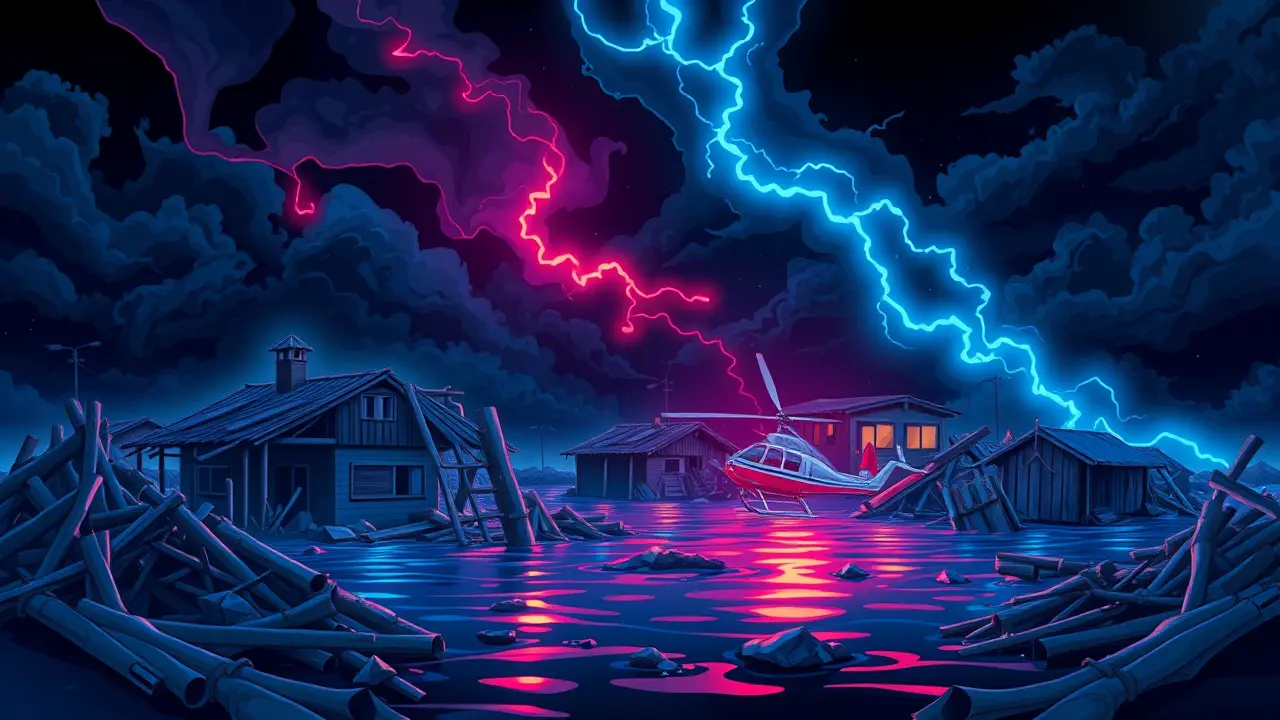
Otherweather & natural eventsStorms and Hurricanes
Typhoon Kalmaegi kills 58 and causes devastation in Philippines.
EM
1 month ago7 min read6 comments
The death toll from Typhoon Kalmaegi has climbed to a devastating fifty-eight souls, a number that feels both starkly clinical and profoundly human as the storm carved its destructive path through the central Philippines before continuing its relentless assault on Palawan island this Wednesday, its sights now set on the volatile South China Sea. This isn't just a statistic; it's a tapestry of individual tragedies, a truth hammered home by the loss of six military personnel whose helicopter, engaged in the very definition of heroism during a humanitarian mission, crashed in the rugged terrain of Agusan del Sur on Mindanao.As the floodwaters, which had turned streets into raging rivers, began their slow, sorrowful retreat from the province of Cebu—a region whose very economy pulses with the lifeblood of tourism—the sheer scale of the devastation was laid bare: homes were not just damaged but utterly destroyed, reduced to piles of splintered wood and shattered memories; vehicles were overturned like discarded toys, and the mud-caked landscape spoke of a violence that was both sudden and absolute. This catastrophe, however, cannot be viewed in isolation.It is the latest, brutal chapter in the Philippines' ongoing and deeply unequal battle against a climate crisis it did little to create, a nation perpetually in the crosshairs of a warming planet's fury. We have seen this story before, from the apocalyptic winds of Super Typhoon Haiyan in 2013, which claimed over 6,000 lives and exposed fatal flaws in preparedness and infrastructure, to the more recent torrents brought by Tropical Storm Megi just two years prior.Each event follows a hauntingly familiar pattern: the frantic pre-landfall evacuations, the howling winds and biblical rains, the agonizing silence of lost communication, and then the grim, piecemeal accounting of the human cost. The immediate consequences are visceral and heartbreaking—families sifting through the ruins of their lives, farmers watching entire seasons of crops washed away in an instant, and the looming specters of waterborne diseases like cholera and leptospirosis waiting to prey on the vulnerable in the storm's aftermath.But the long-term repercussions are a slow-burning crisis of their own. The economic impact on a region like Cebu, where small businesses and the tourism industry are the backbone of local survival, will be measured in years, not months.The psychological trauma, the silent scars carried by children who have lost their homes and their sense of security, is a burden the health system is ill-equipped to bear. Experts from the UN Office for Disaster Risk Reduction consistently point to the Philippines as a global case study in compound risks, where seismic activity, volcanic eruptions, and an average of twenty tropical cyclones a year create a perfect storm of vulnerability.
#featured
#Typhoon Kalmaegi
#Philippines
#fatalities
#destruction
#flooding
#helicopter crash
Stay Informed. Act Smarter.
Get weekly highlights, major headlines, and expert insights — then put your knowledge to work in our live prediction markets.
Comments
Loading comments...
© 2025 Outpoll Service LTD. All rights reserved.